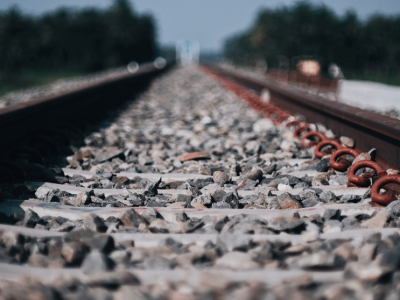NYC airports’ 96% traffic plunge threatens local financial pain
Air travel at New York City’s airports almost disappeared in March while traffic on the Port Authority of New York & New Jersey’s bridges and tunnels plummeted after the Covid-19 pandemic prompted travel restrictions.
Average weekday aviation passengers dropped by 96%, and car traffic on the bi-state agency’s four bridges and two tunnels declined more than 60% for the week of March 30 to April 3 compared to the weekday average in March 2019, according to a bond filing. The agency has more than $4 billion in reserves, capital funds and bank credit to buffer it as the respiratory tract illness forced a shutdown of the economy.
“The Port Authority expects that activity levels will remain similarly depressed until the travel restrictions imposed by the States of New York and New Jersey and the federal government are lifted,” the agency said. The speed of the recovery is difficult to estimate, it said.
One-third of the Port Authority’s revenue is derived from passenger tolls, fares and user fees. The agency also runs seaports, a trans-Hudson River rail line and a bus station on Manhattan’s west side. Some tenants who operate at its facilities have sought to postpone payments, it said.
Cargo volumes at the Port Authority’s seaports declined just 22% in March as factory production resumed in China. The agency said it expected cargo volume to improve “somewhat” in April.
The Federal Aviation Administration allocated about $450 million under the CARES Act to the Port Authority’s airports, John F. Kennedy International, LaGuardia Airport and Newark Liberty International Airport. The agency also runs two smaller regional airports. U.S. airlines have reached preliminary deals to access billions of dollars in federal aid, securing a temporary lifeline.
The Port Authority said it didn’t believe the CARES Act provides funding to cover losses at its bridges and tunnels, and it’s unclear that its Trans-Hudson rail line will receive funding, it said.
Similar Stories

BTS Data reveals long-term trend in North American freight trucking
View Article
NCFO members vote to ratify national agreement with NCCC
View Article
American Airlines becomes only carrier to fly nonstop between Washington, D.C., and San Antonio
View ArticleFTR’s Shippers Conditions Index softens in October, falling to 1.3
FTR’s Shippers Conditions Index declined in October to 1.3 from a 4.6 reading in September. Market conditions for shippers were not as favorable due to firmer fuel costs and tighter…
View ArticleOpen Skies agreement with the Dominican Republic enters into force
The U.S.-Dominican Republic Air Transport Agreement entered into force on December 19. This bilateral agreement establishes a modern civil aviation relationship with the Dominican Republic consistent with U.S. Open Skies…
View Article
WorldACD Weekly Air Cargo Trends (week 50) - 2024
View ArticleGet the most up-to-date trending news!
SubscribeIndustry updates and weekly newsletter direct to your inbox!





